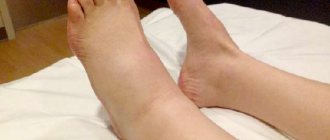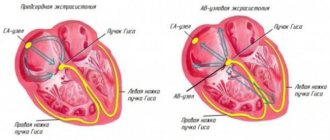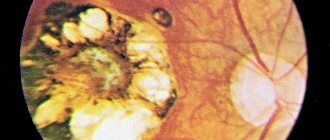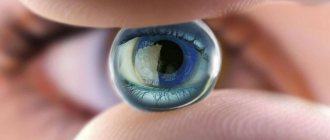In older people, about 30% of cases of epileptic seizures are diagnosed after suffering a brain stroke. A convulsive state may develop in the first days, weeks, or appear unexpectedly several months or years after the stroke. Attacks can affect a specific area (for example, a leg) or the entire body, occur one-time or regularly (2-8% of patients).
Types of post-stroke seizures
Depending on the time of occurrence of seizures, there are 3 types of post-stroke seizures, which have different development mechanisms:
- Precursors (vascular precursive epilepsy) - develop several months, years before the appearance of other symptoms of stroke. The reason for their occurrence is narrowing/partial blockage of the main vessel of the head. Precursor seizures may be the only sign of a micro-stroke or “silent” stroke, which does not lead to noticeable permanent disorders and is diagnosed by chance during a routine MRI or CT scan of the brain.
- Early (epilepsy of irritation). They account for 20-25% of all post-stroke seizures. Occurs during the acute period of rehabilitation (the first 7 days). Their appearance is associated with disruption of the functioning of neurons that have experienced oxygen starvation. Due to disruptions of the antiepileptic system, a small group of nerve cells is formed that produce pathological electrical impulses that cause the muscles to contract unnaturally.
- Late (scarring epilepsy) is the most common type (65-70%). Appear weeks, months, years after a stroke. Caused by the restructuring of nervous tissue. Characteristic of patients who have a cyst or atrophy of the cerebral cortex formed in the affected area.
If late-onset seizures first appear weeks or months after an ischemic stroke, there is a high likelihood of their regularity in the future.
Late seizures may occur:
- after emotional stress, physical strain;
- during sleep;
- be a side effect of some medications.
According to the characteristics of their manifestation, convulsive contractions are:
- tonic – prolonged contraction of individual muscle groups;
- clonic (convulsions) - alternating strong contraction and relaxation of muscle fibers.
Risk factors for the development of post-stroke epilepsy include:
- hemorrhagic form of cerebral stroke;
- impregnation of infarction zones with blood components (hemorrhagic transformation of ischemic stroke);
- cardioembolic nature of the disease;
- damage to the cerebral cortex;
- significant area of damage;
- thrombosis of central veins, sinuses;
- severe course of the pathology.
What is the danger of post-stroke seizures?
According to statistics, stroke is a disease that ranks 3rd in the world as a cause of death. Repeated hemorrhage often provokes coma and destruction of brain cells, which is not comparable to human life.
After a stroke, persistent cramps on the affected side are a clear sign of the progress of a pathological disorder, which can provoke a recurrence of hemorrhage.
Leg cramps at night after a stroke definitely require treatment. Ischemic stroke and convulsions within a week indicate an exacerbation of the disease and its further development.
The consequences can be extremely severe and dangerous not only for health, but also for the life of the patient as a whole. Post-stroke seizures can lead to:
- recurrent stroke (systematic recurrence of seizures indicates incorrect or ineffective post-stroke treatment, it must be urgently corrected. Otherwise, a generalized convulsive seizure may occur, which leads to repeated cerebral hemorrhage);
- death (the intensity and frequency of repetitions of convulsive seizures indicates a danger - ischemic damage to brain tissue. This leads to continued hemorrhage, increased intracranial pressure, coma and death);
- coma (convulsions during or after a cerebral stroke can become more frequent and cause short-term or long-term loss of consciousness, that is, coma);
- disability (leg cramps after a stroke or other limbs are extremely dangerous for a sick person, since he ceases to control the movements of his body and can harm himself, for example, cut himself or bite off a piece of his tongue, and become disabled).
Symptoms and clinical manifestations
Cramps are manifested by contraction of individual muscles of the face, limb, half/entire body, which are usually accompanied by pain of varying intensity. During a seizure, the patient may be conscious or unconscious. The duration of the attack varies: from several seconds to several minutes.
There are many types of seizures, of which three are typical for post-stroke epilepsy. They are usually associated with damage to the frontal lobe of the brain and manifest as a simple partial seizure. A third of patients develop secondary generalization.
| Name of the seizure | Manifestation |
| Simple partial | It occurs without loss of consciousness. Convulsions cover a certain part of the body and may be accompanied by a feeling of déjà vu, disorders of pain and temperature sensitivity. |
| Secondary generalized | The person loses consciousness, his body is shaken by clonic-tonic convulsions. Foam may come from the mouth. |
| Jacksonian | Pathological muscle contractions occur locally and spread to the entire limb. They can be thrown from one side of the body to the other. Consciousness is usually preserved. |
Causes of seizures after stroke
Seizures during stroke have a number of causes. During a stroke, some nerve cells in the brain die. This leads to the formation of cysts. The only sign of a neoplasm is a seizure. Cramps begin due to irritation of the tissues adjacent to the cysts.
Doctors also identify several other important causes of convulsive manifestations. These include:
- Stroke prevention: how and with what to protect yourself from a dangerous disease?
- infectious infection in the brain obtained during or after surgery to remove hemorrhages;
- fatigue;
- nervous tension;
- side effects after taking medications.
Convulsive manifestations can last only a few minutes, or can torment the patient for 10-15 minutes at a time. They can occur both in a separate area of the body and throughout the body simultaneously. After this, the patient loses consciousness or falls asleep. Sleep duration is about an hour.
In most cases, seizures occur in the lower extremities. They can occur in the form of:
- local numbness of parts of the calves, feet or toes;
- prolonged cramps that cover the entire limb.
Convulsive phenomena always occur in a part of the body located opposite to the affected area of the brain (mirror image: if the hemorrhage occurs on the left side of the head, then convulsions and paralysis occur in the right arm, right side of the face or right leg, and vice versa).
First aid for seizures
Sometimes seizures occur as one of the symptoms of a stroke. Very often the attack is accompanied by a loss or disturbance in the level of consciousness. Before the ambulance arrives, such a patient must:
- lay on your side, place a small pillow under your head or build a platform from available materials (jacket, sweater, bag, backpack);
- hold your head so that vomit and saliva can flow down freely;
- wipe off discharge with a napkin;
- Hold the victim’s arms and legs without using brute force. This will prevent involuntary injuries to others and to oneself;
- If at the end of the seizure the patient stops breathing, proceed to chest compressions and artificial respiration.
Strictly contraindicated:
- put any objects into your mouth. They can damage teeth and oral mucosa;
- try to immobilize the patient, unclench his fingers;
- give water - the victim may choke on it;
- offer any medications, except in cases previously agreed upon with the doctor;
- offering ammonia can cause respiratory arrest.
Emergency measures for seizures
Registration of disability after a stroke
Success in treatment depends on taking primary measures to stabilize the patient's condition.
- During an attack, you need to remove your dentures and remove any remaining food from your mouth;
- You should raise your head and put a bag or other handy item under it. The head is held higher than the body;
- Such conditions are accompanied by hoarse breathing. The patient is turned on his side, facilitating respiratory function;
- If a cramp occurs in muscle tissue, you should rub and warm it up. Perform massage movements. At home, you can use olive oil and dry mustard. The homogeneous mixture is rubbed in with massage movements;
- You need to take aspirin. It normalizes body temperature and accelerates blood circulation through the vessels.
These are the primary measures. If even short-term convulsive attacks occur, be sure to consult a doctor.
Features of treatment
The therapeutic approach depends on the type of seizure. If these are warning signs, specific anticonvulsants are not prescribed. The main goal of treatment is to eliminate the narrowing of the artery. Depending on the cause of the pathology, the patient is prescribed anticoagulant medications (aspirin), blood pressure pills, and neuroprotectors.
Early seizures do not require immediate specific treatment. They usually disappear on their own once the metabolism in the brain has stabilized.
Antiepileptic drugs are prescribed exclusively to patients with repeated unprovoked seizures.
Isolated late attacks also require observation. If episodes of seizures are repeated, there is a possibility of developing post-stroke epilepsy, a chronic disease manifested by periodic convulsive conditions. If the diagnosis is confirmed, patients are prescribed anticonvulsants:
- carbamazepine (tegretol, finlepsin);
- valproates (convulex, convulsofin, depakine, valparin);
- topiramate (maxitopyr, topsaver, topamax);
- lamotrigine (convulsan, lamitor, lamictal);
- Levetiracetam (Keppra).
An alternative to drug treatment for seizures is the installation of a miniature vagus nerve stimulator. It helps dampen abnormal nerve impulses that cause epilepsy.
Manifestations of pathology
1. Epilepsy due to stroke is not such a common type of complication, but among elderly and senile people it is being recorded more and more often. It manifests itself as a convulsive attack of varying intensity. As a rule, it is preceded by a series of difficult-to-define symptoms, collectively called an “aura.”
2. The attack usually begins suddenly and can happen anywhere, including on the street. The person lets out a strong cry and falls backward. If a seizure occurs at home, then it is advisable to have time to grab the person so that he does not hurt himself by falling on the floor. If this does happen, then he should put a pillow under his head so that during sudden movements the victim does not injure himself. The teeth should be fixed so that he does not bite his tongue during a seizure.
Possible complications
Older people, who make up the bulk of those affected, are more sensitive to the side effects of anticonvulsant medications. It's connected with:
- simultaneous use of 3 or more medications of different pharmacological groups that can interact with each other;
- unsatisfactory condition of the liver, kidneys;
- the presence of cognitive impairment;
- accumulation of antiepileptic drugs in blood serum.
Most common side effects
| Active substance | Violation |
| Carbamazepine, phenytoin |
|
| Valproate |
|
| Topiramate |
|
Clinical picture
The seizures are usually short in duration and appear in the part of the body affected by the stroke; in rare cases, the entire body may be affected. The duration of the convulsions varies from approximately 15 seconds to 15 minutes, and if the body is affected for a long time, the patient may faint. As a rule, a severe attack ends with the patient sleeping for a long time; it can last about an hour.
Visually, convulsive conditions are similar to tremors of the limbs, but in severe cases, when the whole body is affected, the condition resembles an epileptic seizure. Serious seizures occur in a patient when the frontal part of the brain is damaged.
In general, convulsive conditions are divided into two types:
- Tonic - long-lasting and large-scale in size of the affected area of the body;
- Clonic - short-term, only individual muscles of the limb are affected;
- Generalized - tonic and clonic types alternate in a row.
Signs of seizures after a stroke include the following conditions:
- Loss of ability to contact and communicate;
- Involuntary urination;
- Fainting;
- Severe muscle tension in the area of the cramp.











